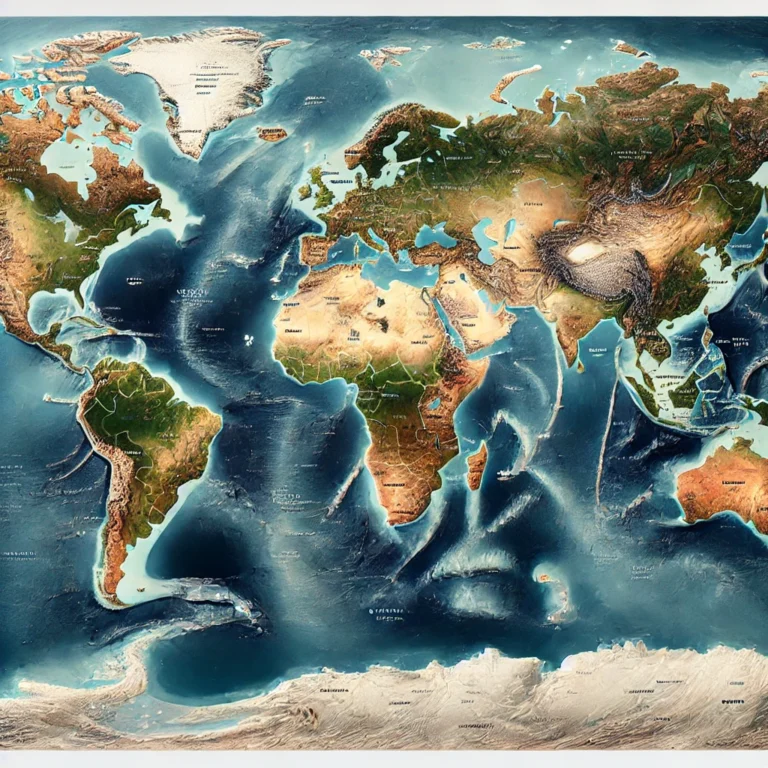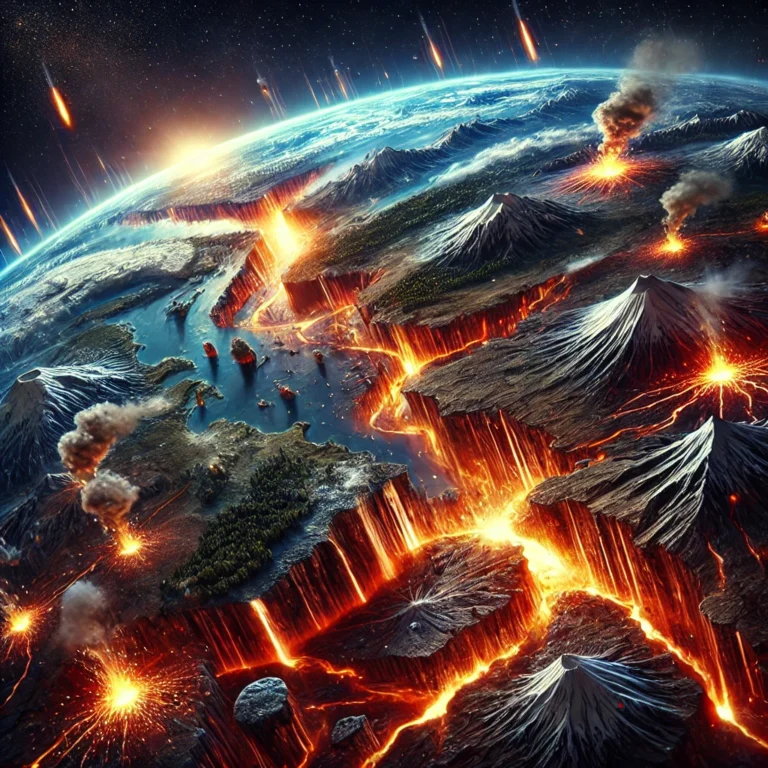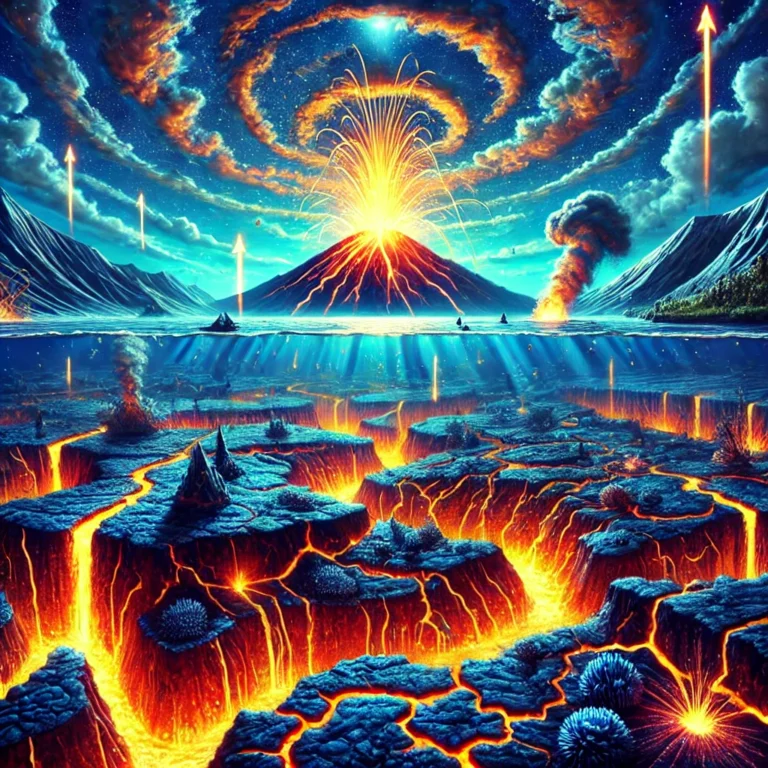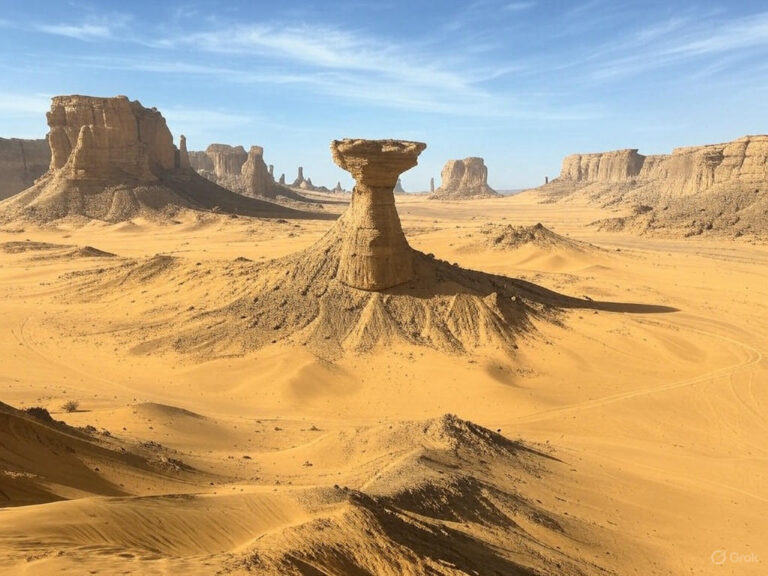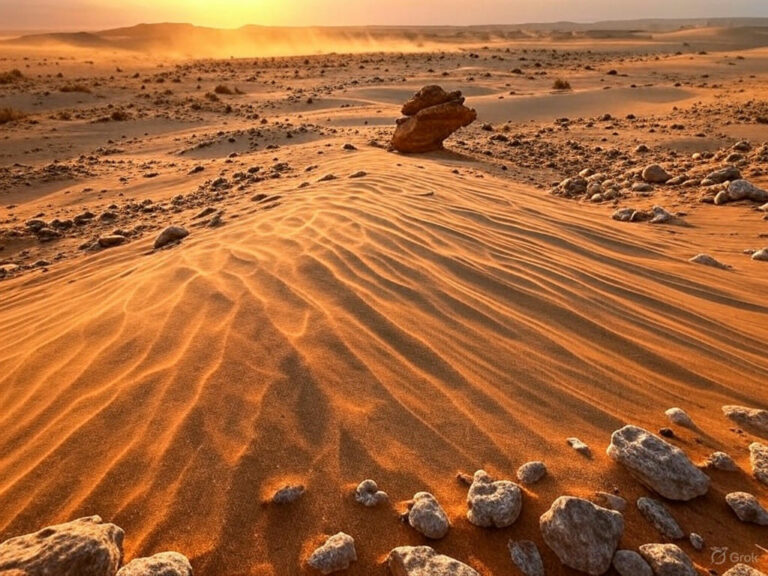Periglacial Landforms
Imagine you are walking through an extremely cold, barren land, where the ground is permanently frozen beneath your feet. This is the periglacial region—a world shaped by ice, frost, and extreme temperature changes. As you traverse this landscape, you come across some fascinating natural formations that seem almost alien. Let’s explore them one by one.
1. Involution
As you dig beneath the surface of the frozen ground, you notice something strange—layers of soil and rock that should be neatly stacked are instead twisted and jumbled. This chaotic deformation of unconsolidated(weak) material just below the surface is called Involution. It happens due to the expansion and contraction of the ground caused by freezing and thawing cycles. Imagine shaking a jar filled with sand and pebbles—the layers inside get mixed up in a complex way, making it difficult to identify the original structure. So, simply you can define Involution as:
Involution is the chaotic deformation and mixing of unconsolidated soil layers due to repeated freeze-thaw cycles, causing expansion and contraction of the ground.
2. Hummocks
Continuing your journey, you notice small, irregular mounds dotting the ground. These tiny wrinkles on the permafrost surface are called Hummocks. They form when the ground is squeezed due to lateral pressure from freezing water in the active layer. Think of it like a water bottle left in the freezer—when the water inside freezes and expands, the bottle’s surface bulges. Similarly, the ground bulges due to the pressure of expanding ice.

So, let’s define hummocks as:
Hummocks are small, irregular mounds on the permafrost surface formed by the expansion of freezing water in the active layer, causing the ground to bulge due to lateral pressure.
3. Palsa
As you enter a swampy area, you see larger mounds, similar to hummocks but much more pronounced. These are Palsas, special hummocks found in wet, marshy environments. It is formed by frost heaving under the influence of ice segregation. They contain layers of ice inside and can grow up to 10 meters in height and 20 meters in diameter. However, they are fragile—if the water table rises or if cracks form, the palsa can collapse, melting away like an ice cream cone in the sun.
Simple Definition:
Palsa is a frost-heaved mound found in marshy areas, formed by ice segregation, containing internal ice layers and prone to collapse if the water table rises or cracks develop.

4. Pingos
The word “pingo” comes from the Inuit language, meaning a small hill. These hills, however, are unique because they form in permafrost regions—areas where the ground remains frozen for years, sometimes centuries. First identified by scientist A. E. Porsild in 1938, pingos can be found in Arctic regions of Canada, Alaska, Greenland, and Siberia.
Definition of Pingo:
Pingo is a dome-shaped hill formed in permafrost regions due to the upward pressure of expanding ice, with an internal ice core, growing through frost heaving or freezing of trapped water beneath a frozen lake.
They come in different sizes:
- Small pingos may be just a few meters tall, while large ones can reach up to 60 meters in height and 300 meters in diameter (almost as wide as three football fields!).
- Some have a closed top, meaning the ice inside is hidden, while larger ones can develop open tops, revealing the icy core underneath.

How Does a Pingo Form?
There are two major explanations for pingo formation, each offering a slightly different perspective. Let’s explore both:
A. Frost Heaving Hypothesis
Think of the ground as a sponge filled with water. When temperatures drop, the water inside begins to freeze, just like how a wet towel stiffens in the cold. But here’s the twist—when water turns to ice, it expands. This expansion pushes the ground upward, forming a dome.
- In permafrost areas, the top layer of soil (called the active layer) freezes and exerts lateral thrust (sideways pressure) on the soil beneath.
- As the frozen layer thickens, ice lenses (thin layers of ice) start forming.
- Over time, these ice lenses formed in the active layer grow in size to form segregated ice due to ice segregation.
- This segregated ice exerts upward pressure and the ground surface rises to form dome shaped pingos.
B. J.R. Mackay’s Frozen Lake Hypothesis
According to JR Mackay pingos are not formed due to Frost Heaving.
- According to him Pingo can be formed due to Frost heaving only when the materials are Frost susceptible i.e. diameter < 0.02 mm whereas materials involved in the formation of most of the pingos have diameter of the particles between 0.1 to 0.5 mm
- According to him Pingos are formed in following manner.
- There is a frozen lake which is surrounded by Permafrost.
- There is unfrozen land beneath the frozen lake. There is still some water at the bottom of the lake but slowly and slowly whole water is frozen and thus unfrozen land is trapped between the lake ice and Permafrost.
- Expanding permafrost exerts pressure on unfrozen land and hence unfrozen portion causes the ground surface to rise upward
- The water of the unfrozen land is converted into ice which collects and grows just below the bulge
- This ice core causes further rise in bulge. Thus a pingo is formed.

5. Thermokarst
As you approach the end of your journey, you notice depressions and sinkholes in the landscape. This is Thermokarst, which looks like limestone Karst topography but forms for a completely different reason.
- In Karst landscapes, sinkholes form due to the chemical dissolution of limestone by water.
- In Thermokarst landscapes, depressions form when ice beneath the surface melts due to rising temperatures, causing the ground to collapse.
Thus, while Karst is controlled by rock type (lithology), Thermokarst is controlled by temperature (thermal conditions).
Definition:
Thermokarst is a landscape characterized by depressions and sinkholes formed due to the melting of underground ice in permafrost, causing ground collapse.
Final Thoughts
Periglacial landscapes are dynamic and ever-changing, shaped by the silent but powerful force of freezing and thawing. From the chaotic twisting of involution to the majestic ice domes of pingos, each landform tells a story of nature’s resilience in extreme conditions. As climate change accelerates, some of these formations may disappear, altering the landscape forever.
For now, they stand as frozen monuments—silent witnesses to the harsh yet fascinating world of periglacial environments.


